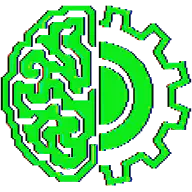SaaS: 0xD#
This video explores the concept of framing a general analysis framework as a precursor to building a general problem solver. The speaker discusses the thought process behind creating a transferable toolkit for understanding and diagnosing various abstract problems, independent of specific domain objectives.
The Need for General Analysis#
[00:00:45] The speaker introduces general analysis as a generic, diagnostic toolkit applicable to many abstractions.
[00:02:00] Analysis should facilitate critical thought and provide directives for exploring potential solutions by symbolically analyzing concepts.
Framing the Analysis: Foundations#
- [00:02:50] A key starting point is defining a domain-specific language (DSL) and choosing appropriate axioms or fundamental units for the problem.
- [00:03:30] Selecting a sensible level of granularity or the “basement level” of abstraction is crucial. Being aware of your own context-based axioms is helpful.
- [00:04:10] Building upon this foundation involves laying generic foundations for analysis.
Dimensions and State Analysis#
- [00:04:50] The framework involves identifying orthogonal axes or dimensions of analysis.
- [00:05:10] Across variations of these dimensions, one analyzes the context or state of the problem.
- [00:05:58] Example dimension: Time (analyzing context in past, present, future predictions; can be continuous or discrete milestones).
- [00:06:20] Example dimension: Scale or Size (how context varies with scale; defining parameters for scale involves parameter engineering).
- [00:07:10] Dimensions can involve discrete categories or continuous variations.
- [00:08:10] Engineering proper units or indicators is referred to as parameter engineering or representation learning.
Abstract Spaces and Combining Dimensions#
- [00:09:15] Analysis can focus on individual dimensions or combinations (e.g., how scale changes over time).
- [00:10:05] The state or context can be modeled as a function of input parameters (a tuple combining metrics from axes), existing in an abstract space rather than a simple geometric one.
- [00:11:30] The state should ideally be represented flexibly, not bound to simple scalar or vector fields for general analysis.
- [00:12:00] The speaker proposes the term semiotensoric space to describe a combination of symbols (categorical) and tensors (numerical/vectoric) for representing both inputs (axes) and outputs (state).
- [00:12:30] The analysis itself can be viewed as transformations between semiotensoric spaces, mapping input dimensions to the resulting state representation.
Applying Calculus and Gradients#
- [00:13:00] Within this abstract framework, calculus concepts like partial derivatives or gradients can potentially be applied to analyze rates of change of the state with respect to specific dimensions (particularly the tensoric parts).
- [00:14:00] While standard gradients (nabla) on the entire semiotensoric state might not be feasible, partial optimization of specific components is conceivable.
Conclusion: The Generic Analyzer#
- [00:15:00] The overarching idea is to develop a generic analysis framework that can be applied to any domain without starting from scratch.
- [00:15:15] Such a framework could auto-generate a DSL, analyze problems in the semiotensoric space, and produce reports.
- [00:16:00] This SaaS video outlines the what and why of this general analysis idea, while the speaker’s other content (The Bit Mage channel) explores the how (the technical math and programming).
The video concludes by emphasizing that these are initial thoughts towards building a powerful, transferable tool for understanding complex problems.
